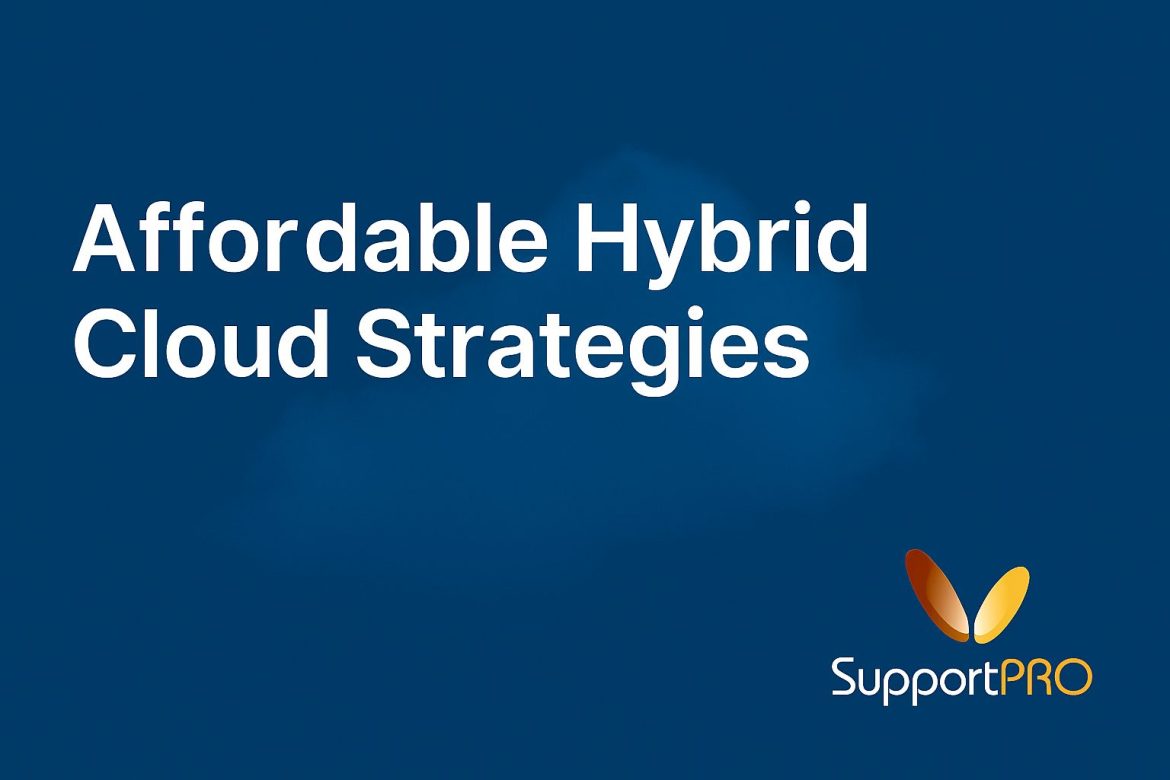Introduction
Cloud adoption has revolutionized business operations, but the biggest challenge for most businesses is to reconcile performance and cost. Businesses centered solely on the public cloud end up with skyrocketing bills, while those centered on private, in-house infrastructure struggle to expand fast. That is why the hybrid cloud model, which is an integration of private and public clouds, has become a common practice.
Hybrid cloud model provides organizations with the benefits of using both public solutions such as AWS, Google Cloud, and Azure, and private infrastructure. But without an economical approach, the hybrid solution will lose its cost advantage very quickly.
In this blog, we will break down economical hybrid cloud adoption strategies, what are the challenges to overcome and how to organize and manage a hybrid cloud.
Why Hybrid Cloud is Growing
Numerous reasons have caused the rapid growth of hybrid cloud deployment:
1. Security concerns for data: In security concerns, Sensitive workloads remain in the private cloud, whereas elastic workloads are handled by the public cloud.
2. Cost-effective strategy: All cannot be stored in organizations’ expensive infrastructure.
3. Compliance needs: Certain data need to be stored locally like healthcare and banking.
4. Scalability: A public cloud is able to manage traffic surges without investment in extra hardware.
But, without a strategy, it is easy to end up with “cloud sprawl,” inefficient utilization of resources, and high costs.
Cost-Effective Strategies for Hybrid Cloud
1. Workload Assessment & Placement
Not all workloads are suitable for the public cloud. Companies need to segregate their workloads by factors such as sensitivity, performance, and compliance.
- Mission-critical sensitive data → Private cloud.
- Elastic workloads (i.e., seasonal applications, bursty web applications) → Public cloud
- Test/Dev environments → Typically less costly and faster to host in a public cloud.
Keeping workloads in the right places prevents organizations from paying too much for resources.
2. Utilize Cloud Bursting for Scalability
“Cloud bursting” allows applications to run in a private data center but burst into a public cloud during peak computation.
- Cost benefit: No over-provisioning of expensive hardware for rare spikes.
- Example: An e-commerce company keeps the core business in a private cloud but bursts AWS or Azure during Black Friday sales.
3. Use Unified Management and Monitoring Tools
One of the biggest hybrid cloud hidden costs is managing two different environments. Human intervention leads to resource waste.
- Dashboards and monitoring systems centralized eliminate duplication.
- Automation ensures idle public cloud resources are shut down when idle.
- Predictive analytics helps one understand what resources need to be used and when.
4. Take advantage of Reserved and Spot Instances
Public cloud vendors offer the following cost-saving capabilities:
Reserved Instances: Long-term reservation at cheaper rates for stable workload consistency.
Spot Instances: Utilize excess capacity for part of the cost (non-essential).
They are used strategically in order to reduce the cost of manufacturing without compromising the device’s functionality.
5. Optimize Data Transfer Costs
One other area of oversight in hybrid cloud is data egress (to pull data out of the public cloud). The cost can quickly accumulate.
Possible solutions involve minimizing cross-cloud transfers, caching data close to where the application runs, and making use of CDNs.
Data also might be deduplicated and compressed by the hosting provider prior to transmission.
6. Implement Strong Governance Policies
Uncontrolled, groups can independently start using public cloud resources, creating massive overspending.
- Implement budget limits and alerts.
- Define usage policies for private and public resources.
- Make IT groups comply with company policy and security standards while saving costs.
7. Leverage Containerization and Orchestration
Containers (Docker, Kubernetes) – they enable portability of workloads by executing them the same in any environment.
- This is to mean that companies can transfer workloads from one setup to another in an attempt to cut costs.
- Kubernetes clusters can utilize both private and public clouds simultaneously, migrating workloads whenever needed in an attempt to reduce costs and optimize performance.
Challenges in Implementing Hybrid Cloud Cost-Effectively
Complexity: Combining private and public clouds isn’t always straightforward.
Security: Managing multiple environments comes at a cost.
Skill gaps: Employees or teams are also not equipped with appropriate skills for hybrid cloud optimization.
Concealed costs: Data transmission, license, and integration tools significantly contribute to the cost.
Even with these issues, however, organizations with well-defined cost strategy manage to attain optimal balance between scalability, security and hybrid cloud cost.
Conclusion
Hybrid cloud is no longer an IT requirement, it is enterprise IT’s future. But without an affordable approach, it can quickly turn cost-prohibitive. The key is workload optimization, automation, intelligent resource allocation, and governance discipline.
To support businesses and organizations with mixed workloads, the ideal partner means everything. With SupportPRO, you don’t just receive a hybrid cloud infrastructure; you receive the know-how to get the most out of its efficient, secure, and economical operation.


